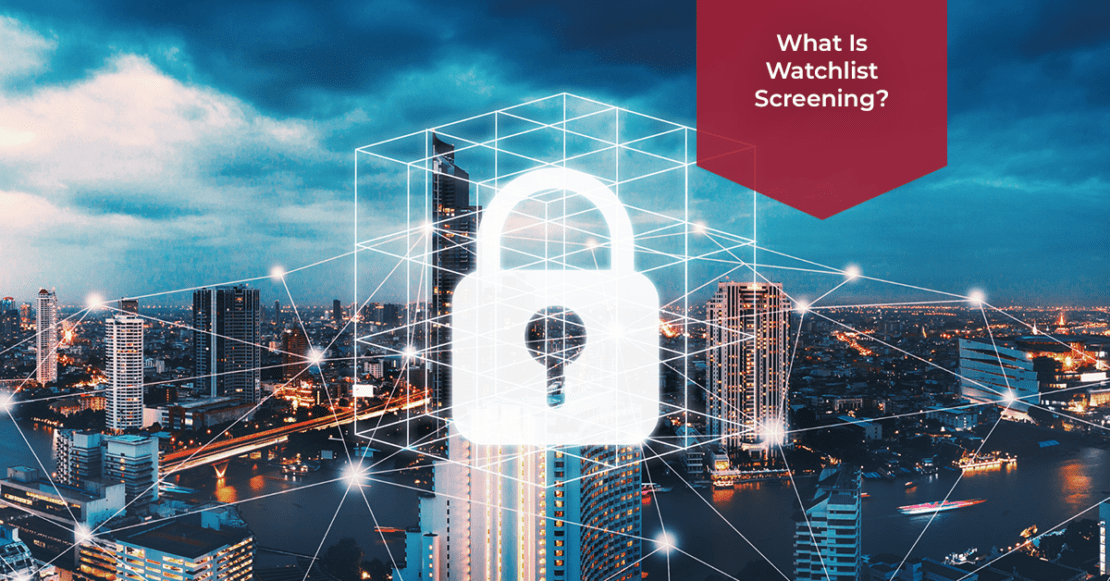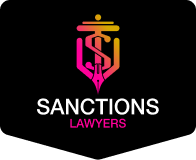Watchlist Screening process is a procedure for checking individuals, organisations, and transactions against special lists that contain information on suspicious and prohibited persons and companies. This method is an important part of the AML/CFT strategy, as it helps to identify and prevent illegal financial activities.
These digital databases contain profiles of PEPs (Politically Exposed Persons), individuals from high-risk countries, subjects of media scandals, and criminals involved in money laundering. Governments and transnational agencies collaborate in compiling international lists.

How Does Watchlist Screening Work?
The Watchlist Screening process occurs when opening a bank account, concluding business contracts, during regular client monitoring, and in many other instances.
Data for Watchlist Screening is sourced from a variety of regularly updated sources: sanction lists, lists of politically exposed persons (PEPs), high-risk individuals, etc. These lists may include individuals accused of money laundering, drug trafficking, trading in weapons of mass destruction and human trafficking for the purposes of labour exploitation, participants in sanction programs, and other categories of individuals.
Watchlist screening begins with identity verification using data from a variety of independent sources and require ongoing monitoring. Following this, an automated system scans the face against various global and governmental lists.
Systems equipped with artificial intelligence and machine learning allow companies to automatically check customers’ names, addresses, and other identification details against relevant global watchlists. In the event of a match, the system issues an alert, which is then forwarded to compliance staff for review. They analyse the results, conduct a thorough investigation, and then either refute or confirm the alert.
Why is Watchlist Screening Important?
Watchlist Screening helps companies avoid business collaborations with individuals who pose a risk to their reputation and financial security. In some jurisdictions, failing to meet such requirements can lead to hefty fines, sanctions, and even criminal liability. Furthermore, these procedures allow for the minimisation of financial losses, avoidance of participation in suspicious transactions, and protection of one’s reputation.
Watchlist screening enables a company to operate in compliance with legislative norms, minimising the risks of legal violations and ensuring sustainable cooperation with financial institutions. After an internal risk assessment, ongoing monitoring helps organizations stay up to date on changes to a customer’s status.
Global watchlist screening is an integral part of the Customer Due Diligence (CDD) process, enabling companies to assess the risks associated with potential clients, and thereafter make informed decisions regarding business cooperation. Neglecting proper checks can lead to unpleasant consequences, including significant fines and penalties, the risk of the company being used as a channel for money laundering, and damage to the business’s reputation among clients and business partners.
Types of Watchlists
Organisations are integrating various watchlists into their internal verification systems. Many of these are publicly available, however, comprehensive solutions provide fast and reliable access to complete data sources.
Let’s check the most common types of lists used in the process of Watchlist Screening:
- Sanction lists are compiled by governmental and international organisations, like Office of Foreign Assets Control, the United Nations, the European Union, His Majesty’s Treasury, Interpol and thousands of other regulatory and law enforcement organizations. These are lists of individuals, organisations, and jurisdictions that are subject to economic or legal restrictions due to their involvement in illegal activities, support of terrorism, or violations of human rights.
- Politically Exposed Persons (PEP) lists: These contain information about individuals who hold or have held significant public positions, as well as their close relatives and business partners. Due to their status, they may be susceptible to corruption risks, thus necessitating enhanced due diligence when dealing with them.
- High-Risk Individuals and Entities: include persons and companies suspected of involvement in financial and economic crimes. Sources of such lists can be both governmental and private agencies.
- Adverse Media/Negative News Lists: This contains information on individuals and companies mentioned in the media and public sources in connection with financial crimes or other scandalous events. Such checks allow for the identification of hidden risks not always reflected in official lists.
- Interpol’s Wanted Persons List contains information on individuals sought by law enforcement agencies worldwide for various crimes. This facilitates effective information exchange between law enforcement agencies and helps avoid collaboration with individuals subject to international search.
- FBI’s Most Wanted List: information on individuals wanted for serious crimes in the USA. This is relevant for companies operating in the USA or those working with American partners.
- The Financial Action Task Force (FATF) High-Risk Jurisdiction List: The Financial Action Task Force releases a grey list of jurisdictions under increased monitoring and a black list of countries with serious and systemic deficiencies in their anti-financial crime systems, which fail to demonstrate efforts to address identified issues.
How to Check if you are on Watchlist?
If you wish to check if your name appears on the global watchlist screening, there are several available methods to do so.
Firstly, one can conduct a check on the OFAC website. The organisation manages one of the most important sanctions lists — Specially Designated Nationals List. The SDN list, which includes information on individuals and companies subject to US sanctions, is freely searchable on the official OFAC website (https://sanctionssearch.ofac.treas.gov). To perform such sanctions screening, you simply need to enter a name, company name, or other identifying information into the search bar. The EU and the UN also publish their sanction lists on their official websites.
Moreover, there are numerous commercial tools available that provide access to databases of sanction lists, such as World-Check, Dow Jones Risk & Compliance, LexisNexis, and many others. These programmes enable users to conduct thorough checks. Typically, access to them is offered on a subscription basis.
If you’re wondering whether negative press can impact your status, it’s also advisable to use media monitoring tools and open-source checks (Adverse Media Screening). This enables the identification of mentions associated with suspicious activities concerning you or your company, which could lead to being placed on global watchlists.
If the check has shown that your name or company name appears on the sanctions list, we recommend seeking legal advice without delay. Specialists will help determine whether the match is accurate or false, and will also assist in devising further steps to resolve the situation.
Watchlist Screening and Sanctions Compliance
The primary goal of Watchlist Screening is to identify clients or transactions that pose risks to the business, as well as to prevent collaboration with entities under sanctions.
Screening against watchlists is a critical component of any Anti-Money Laundering/Counter-Financing of Terrorism (AML/CFT) programme. Every company aims to protect its financial integrity and establish a reliable customer base. Daily, banks and insurance organisations encounter an enormous number of fraudsters attempting to exploit the regulatory system. Therefore, AML watchlist screening becomes incredibly valuable.
The AML compliance programme (Anti-Money Laundering Compliance) is designed to prevent money laundering and other financial crimes. AML Watchlist Screening and adherence to sanctions regimes are integral parts of an effective AML programme, ensuring the identification and verification of clients, transaction control, and monitoring of financial operations.
Sanctions compliance involves adhering to all the requirements of sanctions legislation set by governments and international organisations. This helps companies to avoid dealing with clients and partners linked to prohibited activities, as well as to minimise the risk of breaching international sanctions.
Watchlist Screening and Sanctions Compliance are essential components of an effective AML (Anti-Money Laundering) programme, enabling companies to adhere to international standards, protect themselves from legal and financial risks, and strengthen their reputation on a global scale.
Manual vs. Automated Watchlist Screening
Manual Watchlist Screening process involves a designated employee manually checking client and partner information for compliance with watchlists. This process requires a high level of attention to detail and is time-consuming, especially if the company deals with large volumes of data.
However, even such a labour-intensive process has its advantages. Manual screening ensures a more thorough and comprehensive analysis of data, as humans can make decisions based on context and intuition. Moreover, people can better prepare to identify false positives, which is a common issue with automated checks.
Automated Watchlist Screening utilises artificial intelligence and machine learning algorithms to analyse vast amounts of data and swiftly identify matches with sanction lists. This procedure is faster, more efficient, and allows for the processing of significantly larger data volumes in a short period of time.
An increasing number of companies are favouring automated verification systems, as they reduce the risk of financial crimes and simplify compliance with regulatory requirements. However, there is always a chance that the system might overlook potential risks due to programming errors or an inability to consider contextual factors.
There’s no definitive answer to the question of which method to choose. Both manual and automated screening have their strengths and weaknesses. The final decision depends on the specific needs and resources of your company.
For small organisations with a limited customer base, manual screening will be more cost-effective and efficient. It requires smaller investments in technology and training. Meanwhile, larger companies with an extensive customer base may find it more convenient to use automated Watchlist Screening, which allows for processing a larger volume of data in a shorter amount of time.
Watchlist Screening Challenges
One of the main issues with Watchlist Screening is the occurrence of false positives and false negatives. These arise when the screening algorithm fails to detect a match due to poor data quality or configuration. To address this problem, advanced verification algorithms and comprehensive training programmes for analysts are required.
Another issue is the difficulty of integrating international sanctions lists into a single screening database due to differences in formats, data structures, and naming conventions. Discrepancies can lead to missed warnings or false-negative results. Technological solutions for data standardisation can help improve the accuracy of checks.
The next significant obstacle is data quality. Effective screening is only possible if the information is accurate and complete. Missing data, non-standardised records, and inconsistent naming conventions can lead to missed warnings.
How Sanctions Lawyers help with Watchlist Screening
Companies and financial institutions are facing the necessity of strict adherence to sanction requirements and anti-money laundering standards. Our team of solicitors offers professional Watchlist Screening services using cutting-edge tools and methods for verification against international databases, ensuring high accuracy and relevance of the checks.
An experienced specialist will help develop and implement a compliance policy in accordance with AML requirements. We provide recommendations for optimal configuration of Watchlist Screening and support internal business processes to minimise the risk of violations.
If your client or partner ends up on the sanctions list, Sanction Lawyers will help accurately assess the situation, conduct an internal investigation, and take appropriate measures. In some cases, we may offer support in submitting applications for licenses or permits for the lawful continuation of interactions with such clients.
In the event that suspicious transactions are identified or matches with sanction lists are found OFAC solicitors will assist clients in preparing the necessary reports for notifying regulators. We also offer training for your employees so they can effectively conduct Watchlist Screening procedures and correctly respond to potential risks.
Contact us right now for an initial consultation and analysis of your business needs.


